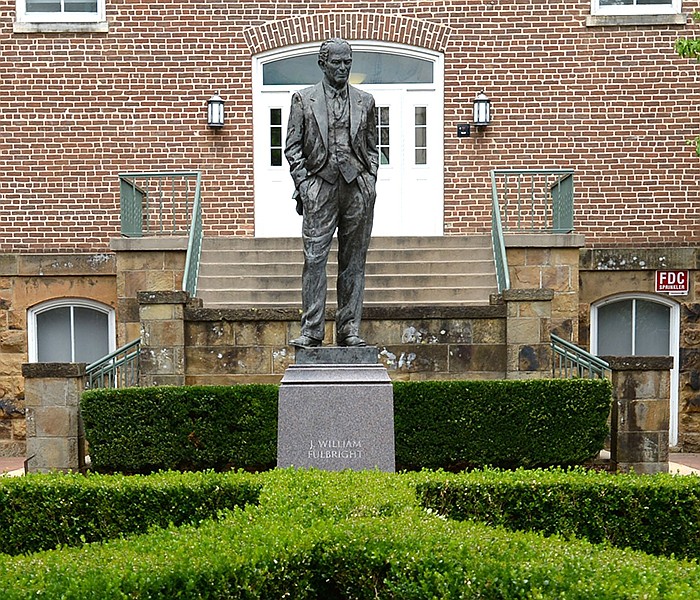The question of what to do with a statue of the late Sen. J. William Fulbright on the University of Arkansas’ Fayetteville campus, as well as the arts and sciences college named in his honor, has dogged the school over the past year.
Now lawmakers are saying proposals to move the statue would violate state law.
Back up: Who was Fulbright?
Fulbright was a president of UA as well as a U.S. representative and senator. Legislation he sponsored created the Fulbright Scholarship, a prestigious international program.
Fulbright also supported segregationist legislation. He helped write and voted for the so-called Southern Manifesto of 1956 to resist court-ordered integration of Black and white students.
Why has the statue come into the spotlight recently?
The decision to erect a statue of Fulbright drew criticism since before the sculpture was dedicated in 2002, but matters came to a head after the death of George Floyd last year and the nationwide protests that followed.
Students and alumni in June and July 2020 signed a petition asking the statue of Fulbright be removed, and that the College of Arts and Sciences, which bears his name, be renamed.
In response, the school created an advisory panel, made of faculty and students, that considered the matter for several months before officially recommending in April that the statue be taken down and the school renamed.
"For many, the statue is a memorial to those segregationist values and a daily reminder to our Black students of that time," the campus committee said in its recommendation to Joe Steinmetz, University of Arkansas chancellor.
However, Steinmetz on May 19 issued to the trustees his own recommendation to instead keep Fulbright’s name on the college and move the statue to a new location on campus that could give more context for Fulbright’s legacy.
Why might moving the statue be illegal?
The state Legislature this year passed a law that declares moving, damaging or altering a historical monument to be a Class A misdemeanor punishable by up to a year in jail and a $2,500 fine. The statute took effect April 28 because of an emergency clause.
Some legislators this week, including Sen. Mark Johnson, R-Little Rock, who sponsored the bill about historical markers in the Legislature, said the law's definition of a historical monument fits the university's statue of Fulbright.
His comments were made while Steinmetz and President Donald Bobbitt of the University of Arkansas System appeared Tuesday at a meeting of lawmakers about the statue.
Read more about what happened at the meeting from Northwest Arkansas Democrat-Gazette politics and special projects editor Doug Thompson.
